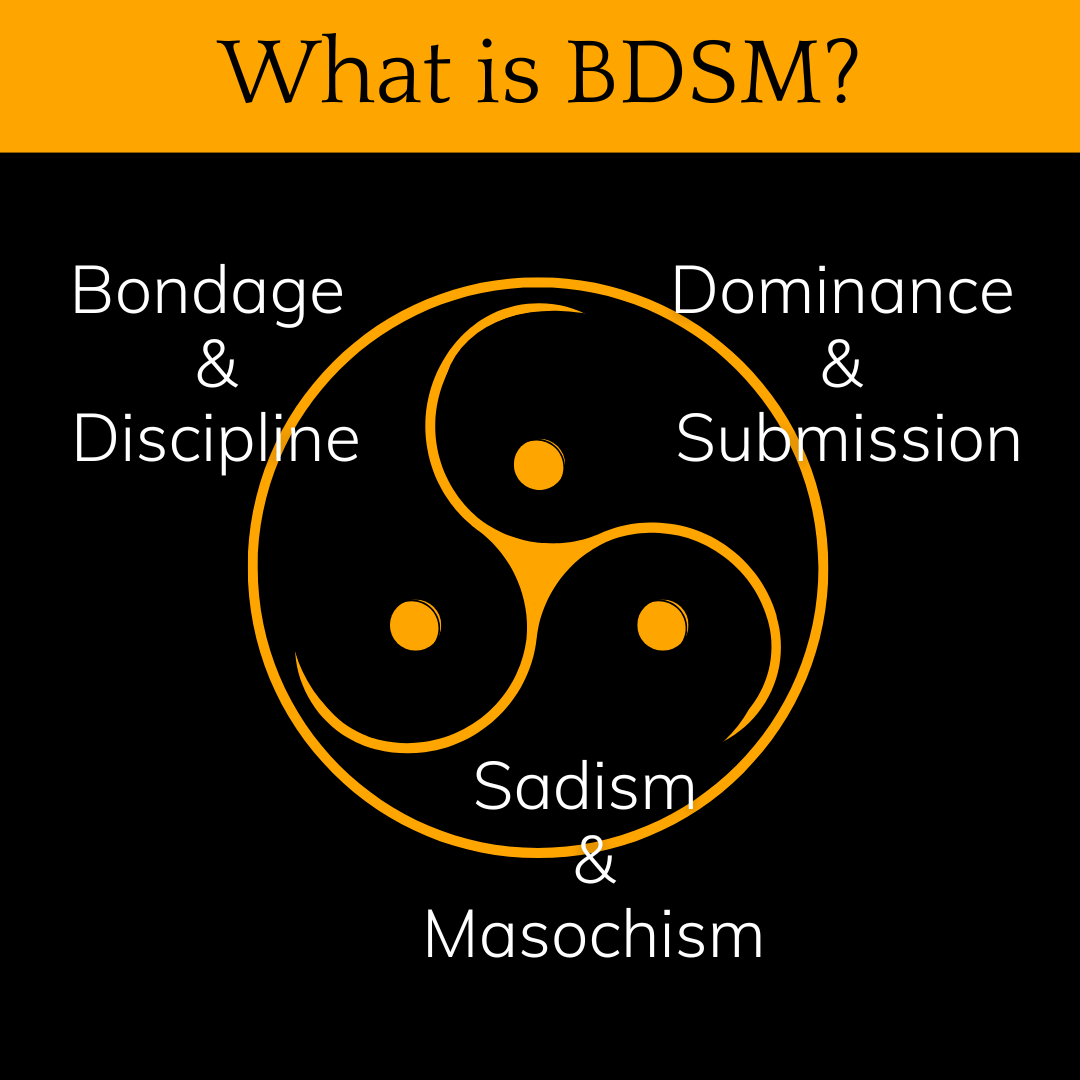What Is BDSM?
BDSM stands for Bondage & Discipline, Dominance & Submission, and Sadism & Masochism.
You don’t have to be into BDSM to be kinky. Although BDSM makes up a large portion of the kink subculture, and the BDSM acronym usually takes centre stage, it’s not the entirety of it. Kinks such as cuckolding, pet play and primal play can all contain components of BDSM, but they can also stand independent of them.
We have a whole host of articles in our Essentials Guide to help you navigate through each of these BDSM pairings, but it’s important to understand how they connect and overlap with one another.
The BDSM Triskelion
Inspired by the Celtic triskele symbol, the BDSM triskelion was created in the 1990s as a visual representation of the three “legs” or “pillars” of BDSM. This concept is based on the idea that the three pairings (Bondage & Discipline, Dominance & Submission, and Sadism & Masochism) overlap with one another and create something akin to a three-legged stool.
Each leg works in concert with the others to create what was viewed at the time as the foundations of kink.
The Kynk 101 depiction of this symbol is not the “official” one. Most notably, our design has sections that are open-ended to highlight that they can ‘bleed’ into each other
Finding your role in BDSM
Similar to actors in a play, a role in BDSM is the ‘part’ an individual plays in a given scene or dynamic. Labels and honorifics are used as a way to tell others the role you take.
You’ve probably seen one of the many kink and BDSM tests available out there (and we’re even working on one of our own!), but sometimes, no role quite seems to fit. Have no fear, dear kinkster! You’re not alone. Just as kinks and fetishes can fall outside of the slash, so too do many kink roles. You can find out more on our Rebels of Kink page or by perusing our articles on ways of being kinky and how to identify.
Before you get started in BDSM
You might be ready to dive right in exploring kink and BDSM for the first time, but there are a few things to be aware of before you throw yourself off the deep end. A dangerous state of mind called frenzy is something to familarise yourself with. You might also consider finding a Mentor and ways to stay safe online and keep you grounded as you explore.
Regardless of someone’s longevity in the lifestyle, every role in BDSM can and does experience a distinct headspace during scenes. These mental states can put both sides of the slash into potentially risky situations that should be approached with attention and care. Read more about the headspaces of kink, and learn about vetting potential partners, creating your limits, and the importance of consent.

